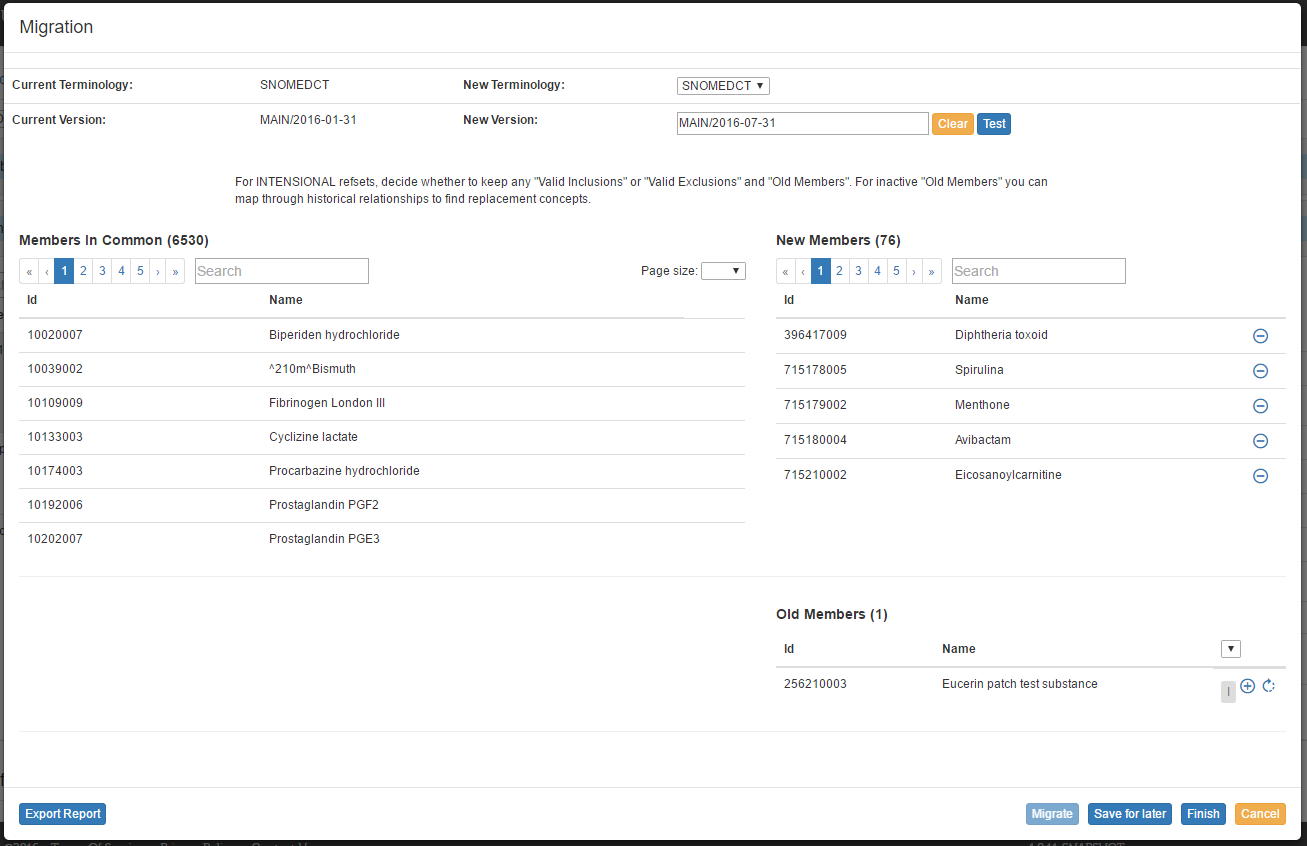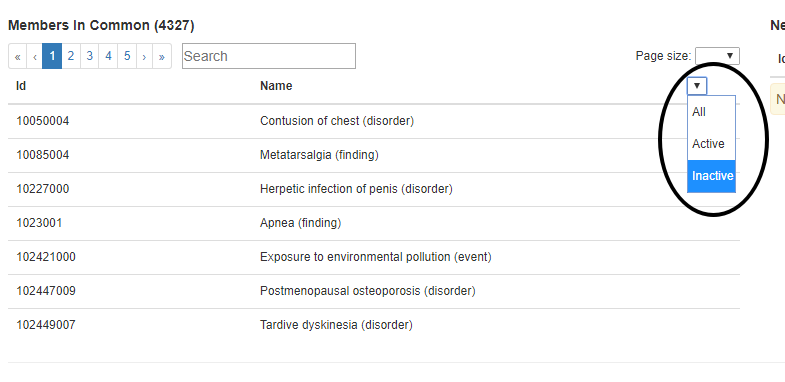Overview
This page describes the steps required to update a refset to a new version.
Prerequisites
- A refset must exist and be populated with refset members. It also must be assigned to a user.
Updating a Refset
The process to migrate a refset to a new version is as follows:
- Select the assigned refset.
- Click on the 'Migration' icon on the Terminology row.
- Enter the new version and click the 'Test' button.
- Click the 'Migrate' button. Migration report will be displayed as shown below.
- Inactive members may not be listed on the first page of results. Therefore, it can be important to filter by 'Inactive', as displayed in the image below. Options will be given to remove Inactive members and/or to select replacement values for them.
- The migration can be 'Finished', 'Saved for later', 'Resumed', 'Canceled' or the report can be exported.
Migration Report
Only some of these sections will be relevant or displayed on each migration report. Please see the migration page for more details on these sections and the actions allowed in each case.
- Members in Common
- New Members
- Old Members
- Valid Exclusions
- Invalid Exclusions
- Migrated Exclusions
- Valid Inclusions
- Invalid Inclusions
- Migrated Inclusions
Migrating Previously Released Refsets
- Select the Project and select ADMIN role on the project (if you do not have ADMIN access, speak to someone on your team who does to do the next two steps).
- Select a refset from the Release Refset accordion. The refset must be in the READY_FOR_PUBLICATION state. If you don’t see that one, click the All/Latest toggle button to display the working copy of the refset.
- Assign the READY_FOR_PUBLICATION refset to yourself.
- Switch to AUTHOR role on the project.
- Go to the Assigned tab and click on your refset.
- On the right side panel there is a row that says Terminology and an icon at the end of that row that says Migration. Click that icon.
- On migration dialog, enter the New Version.
- On migration dialog, click the Migrate button. If the response says ‘No members in common’, click Cancel migration button and let us know. We may need to investigate.
- On migration dialog, make any choices that are made available to you. There may be none. It is also possible that options will be available, but not shown on the first page of results. Therefore, it is important to use the status filter to display only 'Inactive' concepts from the 'Members in Common' table. Inactive concepts will have the option of being removed and a dialog will also be available for selecting replacement concepts.
- ON migration dialog, click the Finish button.




